
by Charles Bonniwell | Dec 15, 2023 | Editorials
Editorial —

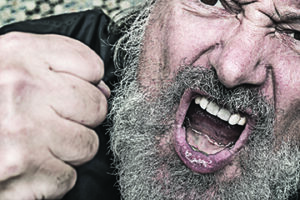
Denver’s new Mayor Mike Johnston, upon assuming office earlier this year, declared that his top priority was housing the homeless. It is not clear whether the politically correct term is “homeless” or the newer “unhoused,” but either appears allowable for the time being. On Johnston’s first day in office, he declared a state of emergency around homelessness and prioritized housing 1,000 homeless people in his first year as mayor. He had learned, as so many politicians had under COVID-19, that you can do things under an emergency that you could never get away with in “normal” times.
Not to let grass grow under his feet he went on a tour of the city’s 74 neighborhoods hoping to find 200 public plots to place “tiny home” communities where people experiencing homelessness could be housed. As he said, “This is what we think is the most important crisis the city is facing.” But with only a month to go only about 250 people have boarded under the program so far.
It may come as a surprise to some newcomers to Denver that housing the homeless has not always been the top priority of a city with now over 711,000 people. “The greatest good for the greatest number” is definitely not a guiding principle of the new progressive Johnston administration.
Of course, there have always been unhoused people in Denver since its founding in 1858, but the so-called homelessness crisis did not reach full public awareness until the 1980s with the dropping of certain housing programs by the Reagan administration and the widespread deinstitutionalization of the mentally challenged. Even then the crisis did not seem so overwhelming that all other city businesses had to grind to a halt.
Denver’s first progressive mayor, Frederico Peña, convened a taskforce in 1984 which led to city funding for a non-profit organization called the “Coalition for the Homeless.” John Parvensky, who would become the head of the organization for 37 years, joined in 1985. It had at the time a $100,000 budget and a staff of six. Parvensky has been deemed one the most successful modern Denver entrepreneurs growing his homelessness business to 750 employees and 2,000 volunteers and a budget of over $126,000,000 when he retired.
He was able to do this all while increasing the number of homeless to a little over 3,600 when he left. Following the footsteps of Parvensky, an energized younger staff at the Coalition headed by the new President and CEO Britta Fisher, have managed to grow homelessness in Denver in a single year by an impressive 31.7% to just under 4,000. Even more impressive is her growth in homelessness for the first timers by 120.4%. Even the late Bernie Madoff would have had to give a tip of the hat to that achievement.
Luckily at the right time, the homeless have a true advocate in the city’s new mayor, Mike Johnston. Not since Mayor John Hickenlooper and his “10 Year Plan to End Homelessness” have the homeless had such a champion. But even John Hickenlooper was not willing to suspend all work on any other of the city’s concerns in the name of growing the all-important homeless segment of the population. As Johnston stated, “We took the oath yesterday to commit on taking on this problem.” The new mayor correctly understood that the city could not rely on existing Denverites facing hard times to sufficiently increase the homeless. No, if homelessness was going to continue to be a growth industry in Denver, we needed to attract homeless from all across the country. What better way than to guarantee any person coming to Denver a home as the mayor did. Moreover, Mayor Johnston has promised “funding for wrap around services and it will come from the existing Homelessness Resolution Fund.” In addition, money forecasts will come from Proposition 123, the “Colorado Affordable Housing Financing Fund” which is expected to bring in $300,000,000 annually.
Mayor Johnston sagaciously understands that Denver is at a competitive disadvantage in attracting the homeless due to, at times, brutal winters in Colorado. Thus, we must look abroad for assistance in growing homelessness in Denver. Foreword thinking Mayor Wellington Webb back in 1998 declared Denver to be a “sanctuary city” for illegal immigrants with Executive Order 116. Mayor Hancock cleared any ambiguity over the executive order when he declared that Denver welcomed the “sanctuary city” designation. This allows the “Queen City of the Plains” to partner in a bipartisan manner with Democrat led cities in Texas, like El Paso, and Republican Governor Greg Abbot’s Operation Lone Star to bus homeless illegal immigrants from all over the world right to our doorsteps.
True, we need to share the bounty with other sanctuary cities like New York City, Chicago, and Los Angeles, but there are tens of thousands pouring over the border every day. President Biden and Secretary of Homeland Security Mayorkas have promised to keep the border open as long as humanely possible.
Denver, in welcoming thousands of new homeless customers from across the country, and the world, will dwarf the 1,000 people that Johnston claims he will be housing this year. We have a modest proposition that Denver needs to require the Coalition of the Homeless to go public on the New York Stock Exchange. While homelessness has been a major growth industry in Denver over the last 40 years, its salad days are far from over with Mayor Johnston at the helm. That way the individual investors in Denver could join Mayor Johnston in celebrating the New Year and look for positive returns for years to come.
— Editorial Board
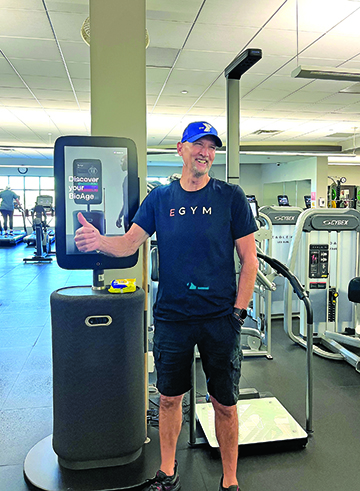
by Glendale Sports Center | Dec 15, 2023 | Glendale City News
The Health Beat
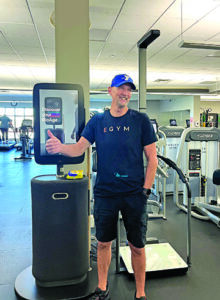 “It’s a game-changer,” says Tim Torsney, YMCA of Metro Denver member, of EGYM. Torsney has been a member of the Arvada YMCA for 4 years. The Arvada YMCA was the first YMCA in the metro area to offer EGYM in 2019.
“It’s a game-changer,” says Tim Torsney, YMCA of Metro Denver member, of EGYM. Torsney has been a member of the Arvada YMCA for 4 years. The Arvada YMCA was the first YMCA in the metro area to offer EGYM in 2019.
EGYM is a state-of-the-art intelligent strength training system that keeps track of your personal settings and your progress over time. The system is set up in a circuit and users simply scan in and the machines adjust automatically to your settings. Torsney explains, “They are so easy to use, you don’t have to remember what weights you used last time. It remembers for you.”
Torsney, who began using EGYM before the pandemic and continues to use the system, finds this feature incredibly convenient as it eliminates the need to keep track of your previous workouts. The machines take care of it all, making it easy for anyone to fit in a quick and effective workout.
But Torsney isn’t just a casual gym-goer; he’s serious about his health. He’s a runner and avid cyclist, yet he noticed that he had been neglecting his leg muscles. With EGYM, he’s seen significant improvements in his leg strength. This technology has had a profound impact on his overall health and says it has helped significantly in managing his high cholesterol.
Beyond the physical benefits, Torsney values the social aspect that EGYM and coming to the YMCA offers. He is a retired Director of Tax Compliance and Criminal Tax Enforcement with the Colorado Department of Revenue, and, today, the Y is part of his community, where he’s made several friends and emphasizes how important this social element is to maintain a consistent fitness routine. He also has a personal connection, as his daughter, Veronica, also works at the YMCA.
Torsney gives a wholehearted recommendation of EGYM, sharing that even his doctor inquired about EGYM during Tim’s recent physical and planned to recommend the system to his other patients!
At the YMCA, Torsney is finding wellness and the community the YMCA endeavors to offer to all who come to its centers. In this “third place” between work/school and home, the YMCA is a welcoming place. EGYM is offered at 5 of 6 YMCAs in the Denver metro area. Learn more about EGYM, YMCA membership and all the activities and programs available for older adults, and for families and kids. Visit denverymca.org/egym.

by Jessica Hughes | Nov 16, 2023 | General Featured
by Jessica Hughes

Labeling your bins takes the guesswork out of where things go.
Oftentimes, the holiday season can feel overwhelming with the in-laws in town, additional obligations, finding the perfect gift, and then wrapping it. With so much going on, being organized can make a world of difference and ease the stress of “what box did I put the Christmas lights in last year.” Decluttering and organizing can help you focus on life’s other obligations this time of year. But where does one start?
Christina DesAuguste, founder of The Organizing Company — a professional organizing company that helps people organize their “stuff” in a functional, good-looking way, says to start with a method. “For those starting the process of organizing, it is best to start with a method, rather than “tips and tricks.”
During the holiday season, one of the biggest mistakes DesAuguste says she sees often is people frantically throwing things in their hamper or some other “catch all” and stick it in the closet somewhere right before friends and family arrive. “It’s best to try and not hide your mess before company comes over,” says DesAuguste. “Instead, try to come up with a method or process that sets you up for success.”
One method DesAuguste suggests when bringing out decorations for the season, is to place your non-holiday items in the holiday bins you pulled out from storage. This way, when the holidays are over, you can easily make the swap.

Christina DesAuguste gets organized with one of her Hilltop clients in Denver.

Organization not only reduces stress, but it looks good too.
“Make a decision about how you store your holiday decorations,” says DesAuguste. “You can do it by room or by category. But try not to do a “free for all storage” and take the time to be methodical.”
While DesAuguste emphasizes there is no one size fits all for organization items everyone must have, she does mention a few things she thinks everyone can benefit from. “A label-maker is huge help in getting things back where they belong. It helps eliminate the “where does this go?” question.”
Another item she strongly suggests might be one that surprises you. “A three-step stool is great to have handy,” says DesAuguste. “It sets you up for success by having easy access to things, so you put items back in their right place.”
In terms of decluttering your space to make room for all your holiday demands, DesAuguste says she is a big fan of having children go through their toys before gift-giving season. “Choose things they are ready to part with and donate. That way when new gifts come there is room for them.”
But taking away your kid’s toys might prove challenging, so starting with big bulky items that don’t have any meaning is another option. Think of items like excess small appliances, comforters you no longer use, or cleaning supplies you don’t use anymore. One other item that is less obvious but easy to discard is old paint cans.
Often forgotten about, paint cans clutter basements, garages, and crawl spaces,” says Kevin Lynch, the Program Manager for PaintCare Colorado. “Free up some of that space by taking cans of paint to one of our local drop-off sites or using the PaintCare Door-to-Door service to make room to store presents in advance of the holidays.”
PaintCare is the paint recycling program in Colorado for consumers and businesses to drop off their unwanted paint, no matter the brand, for free reuse or recycling. With more than 160 participating drop-off locations, most locations are at paint and hardware stores.
So, why worry about getting rid of your old paint cans, aside from decluttering your space? “The older that paint gets the less usable it is,” says Lynch. “Unused cans of paint can become rusty and leaky from moisture, especially in our fluctuating Colorado climate.”
Drop-off is available year-round during the retail location’s regular business hours. And if you don’t have the ability to visit one of the drop off locations, the Denver area is fortunate to have a PaintCare home paint pickup program, called Door-to-Door Service, for households with more than 10 gallons of leftover paint, stain, and varnish. There is no charge for the pickup service; the cost is included on the sale of all new paint purchased, which is how the PaintCare program is funded.
If you’re not ready for a full-blow n organization method, DesAuguste offers a few organizing “hacks” to help get you started. “Build a “10-minute tidy up” into your daily routine. Having this time to make sure things get back to their proper homes is a great way to prevent the overwhelm that comes with huge piles of mail/laundry/dishes, or a wild playroom.” She recommends doing this after dinner and before sitting down to relax. “But whatever time of day you and your family can be consistent is great,” says DesAuguste.
n organization method, DesAuguste offers a few organizing “hacks” to help get you started. “Build a “10-minute tidy up” into your daily routine. Having this time to make sure things get back to their proper homes is a great way to prevent the overwhelm that comes with huge piles of mail/laundry/dishes, or a wild playroom.” She recommends doing this after dinner and before sitting down to relax. “But whatever time of day you and your family can be consistent is great,” says DesAuguste.
Another trick she mentions is to assign tasks to a certain day of the week. “For example, Mom’s laundry day is Monday, Tommy’s is Tuesday, and Suzie’s is Wednesday,” says DesAuguste. “Have a day of the week you open your mail rather than trying to open and deal with it while you’re carrying in groceries and unpacking kids’ backpacks- it just ends up in a pile somewhere never dealt with.”
She also suggests that until you are ready to get your house fully organized you can designate a day of the week that you organize. “Build time into your routine for things like this so they are more likely to get done.”
If you’re having a hard time starting the process of organizing and decluttering, Des Auguste says to simply start with your why in mind. “It helps to know why and deciding that it’s worth it is important to getting started.” Learn to organize anything in less than 10 minutes with Morton’s free video and guide at theorganizingco.com.
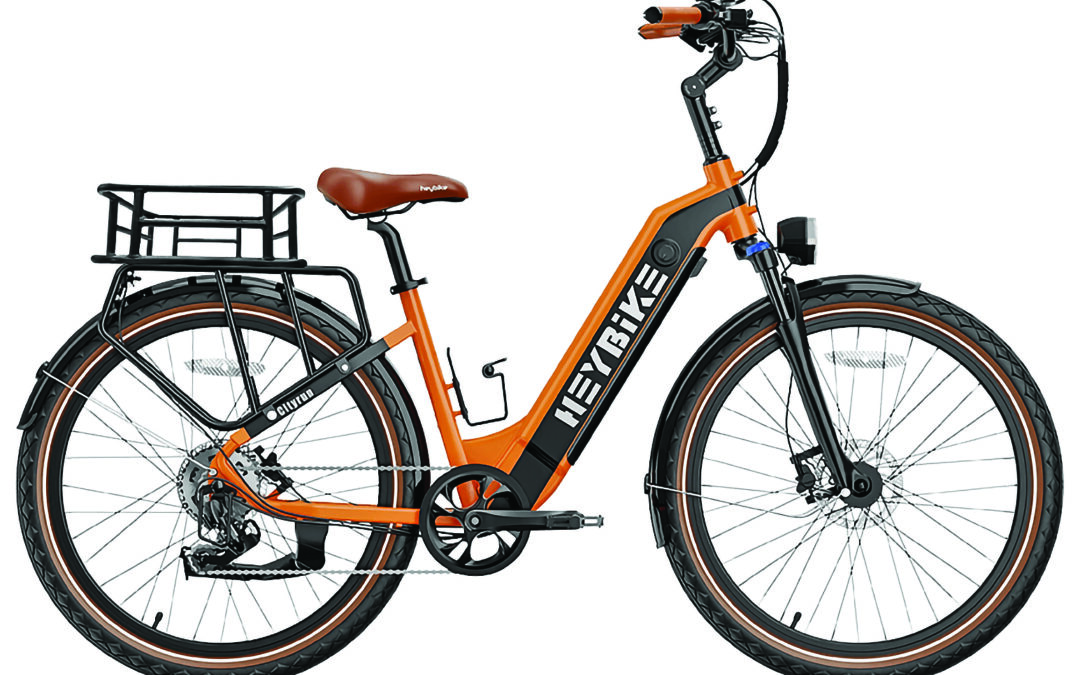
by Mark Smiley | Nov 16, 2023 | Travel
by Mark Smiley
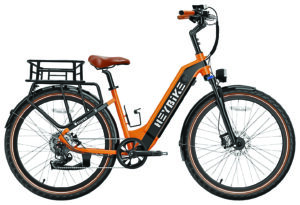
Solid Ebike: The Heybike Cityrun is an ebike to consider if in the market for one. It is powerful, comfortable, and reliable.
Electric bikes have grown in popularity over the last couple of years. To meet the demand and to try to reduce the amount of vehicles on the road, the city of Denver launched a rebate program in April 2022. It has issued over 7,000 vouchers totaling $6.5 million since then and more on the way.
According to a survey conducted by the city of Denver’s Office of Climate Action, Sustainability, and Resiliency, cyclists are replacing 3.4 vehicle trips every week with electric bike trips, which according to the office, totals 150,000 vehicle miles per week.
The vouchers are good for 60 days and can be presented at participating ebike dealers for an immediate rebate at the register. Most are good for $300 toward the purchase for a regular ebike, and $500 toward the purchase of a cargo ebike. Lower income qualified candidates may be eligible for as much as $1,200.
There are many options to consider and most good options are all over $1,000. The Heybike City Run is one to consider as it fits the bill for what most people are looking for. It retails for $1,299 at the time of press and can be purchased using a voucher at Boost Ebikes at 2344 S. Broadway in Denver.

Versatile: The Heybike Cityrun suits users of all heights and weight.
The Heybike City Run takes some time to assemble as most ebikes do, approximately 30-45 minutes. Once assembled, the learning curve is minimal. Most riders can easily fit comfortably as it has a load capacity of 350 pounds. The technology syncs with both android and IOS users with its own app. The smartphone app lets you customize and update the bike, control whether it’s locked, and track your rides. It is not meant to be anti-theft, but it does make it more difficult to steal if it turns off if the Bluetooth is not connected.
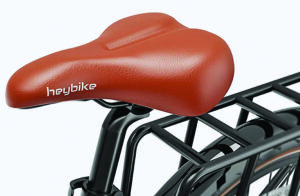
Comfortable: The Heybike Cityrun’s seat is comfortable for any user. The step through design also makes it easy to get on and off.
The 500W motor and 48V 15Ah battery make it more than suitable for long rides. In fact, you should be able to travel between 55 and 65 miles on a charge. This bike has the capability of going 21 mph depending on weight and throttle.
Heybike just launched a new commuter bike, called the Horizon. The Horizon is very similar to the City Run with a few differences. The Cityrun cannot be folded, while Horizon can be folded. Compared with battery installation, Cityrun’s battery is installed at the bottom of the frame, while Horizon’s battery is installed at the top of the frame. The minimum height of Horizon riders is higher than that of Cityrun, and the motor on Horizon is more powerful than Cityrun, Horizon is 750W and Cityrun is 500W.
The Cityrun is a bike that gets good reviews from trusted sources and as mentioned before, should fit what most people are looking for in an ebike. It’s an affordable, comfortable, and powerful ride that gets going quickly when stopped and can handle long distance travel on a charge. It also has turn signals and a brake light along with other safety features including hydraulic-disc brakes, a loud horn, an LED headlight, and hands free access.
For more information on the City of Denver’s ebike voucher program, visit energyoffice.colorado.gov/ebike-rebates. To learn more about the City Run, visit www.heybike.com/products/heybike-cityrun-electric-bike.

by Charles Bonniwell | Nov 16, 2023 | Editorials
 At one time not so long ago, everyone loved bicyclists. What is there not to love? The vast majority of people have ridden a bike some time in their lives. Bicycling is great for your health, it lessens automobile traffic, and is helpful to the environment as a whole. But as Eric Hoffer surmised, every cause starts as a movement, becomes a business, and finally a racket. Even many bicyclists intensely dislike the bicycle lobby in Denver, as evidenced by the many communications this publication received on last month’s lead story: “7th and Williams Fiasco.”
At one time not so long ago, everyone loved bicyclists. What is there not to love? The vast majority of people have ridden a bike some time in their lives. Bicycling is great for your health, it lessens automobile traffic, and is helpful to the environment as a whole. But as Eric Hoffer surmised, every cause starts as a movement, becomes a business, and finally a racket. Even many bicyclists intensely dislike the bicycle lobby in Denver, as evidenced by the many communications this publication received on last month’s lead story: “7th and Williams Fiasco.”
Developers use the bicycle lobby to argue that they should not have to provide adequate parking for their high-density apartment buildings. Denver’s Department of Transportation and Infrastructure (DOTI) has been captured by the bicyclist lobby and is busily screwing up streets across the city with ridiculous and ugly plastic bollards, roundabouts, and striping all in the name of “bicycle safety.”
Whether it’s at Williams and 7th, Broadway, or Marion Parkway, DOTI’s work is reviled by residents, businesses, pedestrians, and bicyclists, and just about everyone else with the exception of the bicycle lobby and tone-deaf politicians like District 5 Councilwoman Amanda Sawyer. Moreover, this is just the beginning. DOTI has many other so-called “bicycle safety” projects on its books throughout the city.
The worst part of it is, as letters to this paper demonstrate, that DOTI’s monstrosities do not provide bike safety, but just the opposite for everyone involved, including bicyclists. Accidents are piling up along the streets that DOTI has jerry-rigged, and in particular, where it has installed roundabouts on streets not designed for them, with trucks, buses, delivery vans, and other larger vehicles having to careen around them.
The intersection of 7th and Williams alone has seen four accidents between September 25 and October 6, bringing the total amount of accidents since the installation of these roundabouts to nine, as reported to the Chronicle by Kitty Koch, Denver resident.
But the baleful influence of the bicycle lobby is not limited to the actual streets of Denver. Last fall, Ordinance 307 was pushed by the bicycle lobby and was narrowly passed. This ordinance imposes fees on Denver homeowners from $110 to $1,000 per year for sidewalk repairs (see “Bicycle Lobby Peddles Tax That Forces Property Owners To Fix City Sidewalks”, January 2023 edition of the Chronicle). Voters who live in apartment buildings are not directly affected, but homeowners are. They have taken their outrage to Denver’s City Council, which has been delaying the implementation of the now highly unpopular fees, but the day of reckoning is coming.
Undoubtedly, the bicycle lobby is searching for other opportunities to make the lives of Denverites worse and more costly as that lobby is a monster that must be fed. What can you do about it? Well, supporting the expected recall effort of Councilwoman Amanda Sawyer, who is a pitchwoman for the bicycle lobby, would be a positive step. Electing someone who returns calls and cares about his/her constituents and not just pressure groups is never a bad idea.
— Editorial Board

by Glendale Sports Center | Nov 16, 2023 | Glendale City News
Try These 3 Tips And Give Yourself Grace!
By Jennifer Lease, RD, CDN, Director of Nutrition Initiatives, YMCA of Metro Denver

Are thoughts of all the holiday sweets and treats causing you stress?
Do you feel like you can’t enjoy your favorite holiday foods when you’re working on your health?
Are you worried that what you eat during the holidays will throw off progress toward your goals?
You’re not alone!
The holiday season is a time of celebration that usually comes with lots of sweets, treats, and traditional dishes that feel indulgent. It can be difficult to find balance during the holidays — wanting to enjoy all the foods you love while being mindful of your health.
You might hear that word balance and feel frustrated by it. What does it even mean? Balance means enjoying nutritious foods most of the time, while giving yourself grace (and space) to enjoy those sweets and treats.
So, how can you find that balance during the holidays and enjoy your favorite foods without the side order of guilt? Here are some tips:
- Balance your plate and practice portion control
You can enjoy a bit of everything with some balance and portion control. Plus, you’ll feel better after the meal, too! The basics of a balanced plate include protein, veggies, and a starch or grain. Try filling half of your plate with veggie dishes and then take a smaller portion of the others you want to try. Holiday dishes tend to be heavy, starchy foods, so don’t forget to add some protein like turkey or chicken to your plate to create that balance. Then, enjoy every bite!
- Move your body
Move your body, not because you think you should make up for eating those holiday treats, but because movement makes you feel good both physically and mentally. Movement can set a positive mindset for the day and the after affect is the feeling of doing something good for your body. Movement also helps with digestion. If you’re feeling super stuffed after a holiday meal, some exercise can help you feel better. Remember, it’s important to find exercise that you enjoy and that truly feels good for you. Exercise is often looked at as punishment for eating “badly,” but it’s really part of a healthy lifestyle that contributes to your overall well-being.
- Remember that every day is a new day
A healthy lifestyle should be sustainable. This means having flexibility and leaving space for the foods you enjoy. You don’t need to “compensate” for what you eat at the holidays. You don’t need to work out for three hours the next day to make up for last night’s meal. Instead, make the intentional choice to enjoy what you want and to be present in the holiday season. Each day is an opportunity to get back on track with your regular eating habits and routine.
Do you want to take the guesswork out of nutrition and work to set realistic healthy lifestyle goals? The nutrition team at the YMCA of Metro Denver can help. Try our Mindful Eating Series starting in January 2024. Reach out at nutrition@denverymca.org or visit us at denverymca.org/nutrition.

















